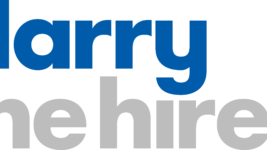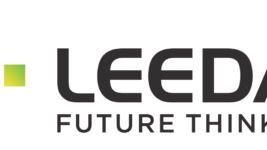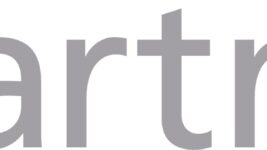INTERNATIONAL
4 Jul 2023
EUROVISION’S LIGHTING EXTRAVAGANZA
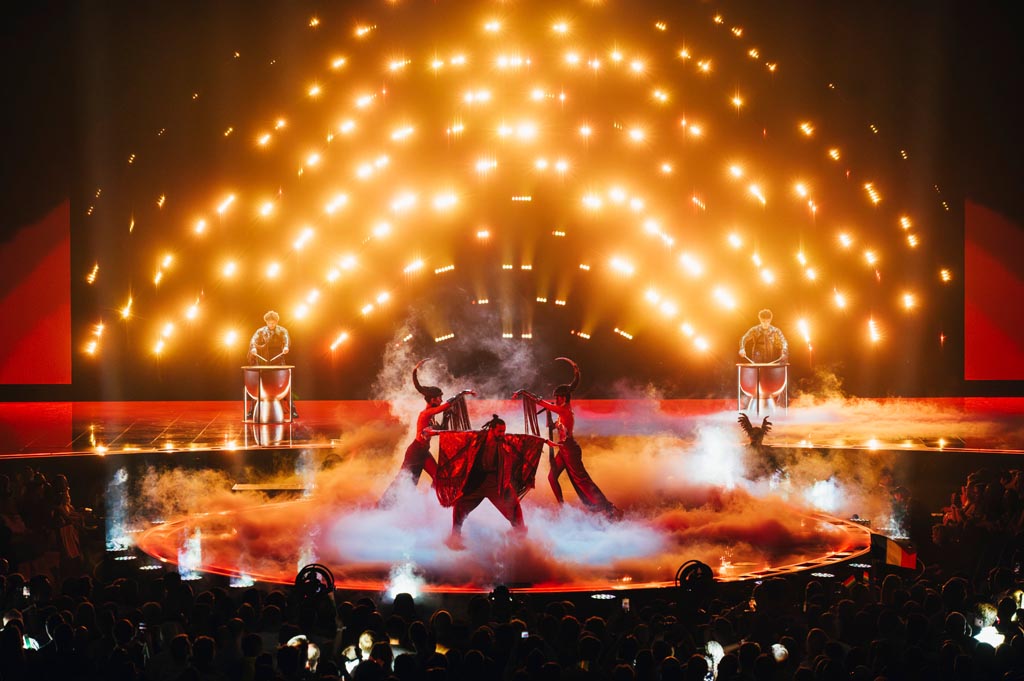
Subscribe to CX E-News
In a unique collaboration between countries, the 67th Eurovision Song Contest, that annual glam-and-glitter-tastic extravaganza of music and lighting, was hosted in Liverpool recently by the UK on behalf of last year’s winner, Ukraine, after security concerns in that country made hosting the event untenable. It’s the first time two nations have co-hosted the event.
Two semi-finals took place on the 8th and 11th of May 2023, where 37 acts were whittled down to 26 finalists for the spectacular Grand Final on the 13th at the Liverpool M&S Bank Arena. The show topped UK viewing figures and was broadcast globally to over 160 million viewers.
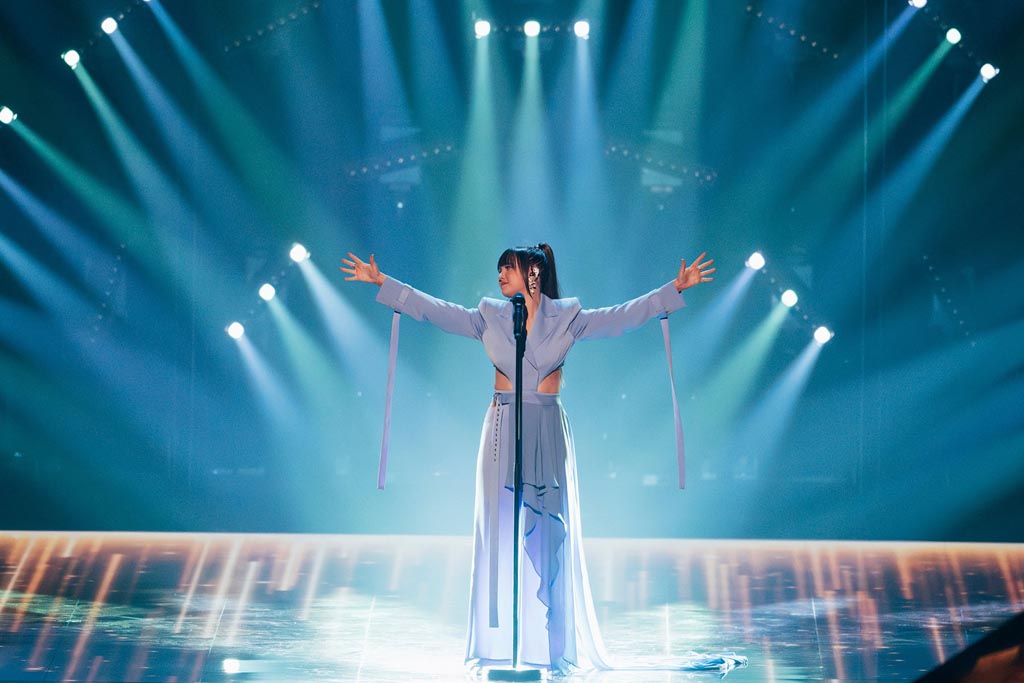
In what he called “a dream-come-true project”, multi-award-winning lighting designer, Tim Routledge, and his team were responsible for every aspect of the lighting, including all 37 performances, presentation states, commentator boxes, voting sequences, and the half-time and opening shows for the two semi-finals and Grand Final. This massive undertaking was based on briefings, renders and notes, mostly delivered remotely, and a 20-minute meeting with each of the countries’ delegations back in March. “We had to focus on the key points from each to realise their design wishes and work fast to deliver everything within the time frame,” Routledge said.
Well known for his sumptuous glossy floor and epic pop lighting designs for television, it was Tim Routledge’s first ESC. So it was for set designer Julio Himede, who collaborated closely with Tim on the massive project. Julio is equally accomplished; acclaimed for his work on major music broadcast shows like MTVs VMAs and EMAs, amongst others.
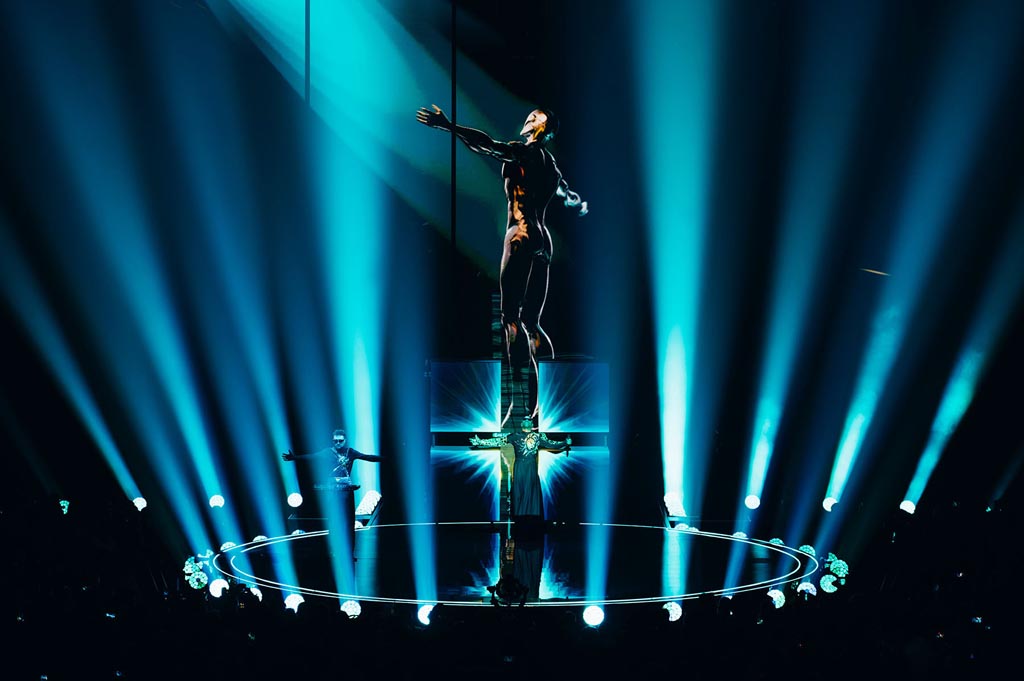
The set effectively surrounded the performance space with video, so lighting placement was challenging and had to be facilitated where there was no encroachment, whilst maintaining the architecture of the space and creating all the right moods.
The results were a feat of synergy as much as technical excellence, in an infrastructure where lighting, video and scenic presentation worked seamlessly as one visual entity.
Tim Routledge and his team created 37 unique immersive lighting environments to showcase each delegation’s songs, keeping each of these micro-shows animated, fluid and energised, curating lighting and video interactively and simultaneously. This enabled the end-goal of offering the clean, precise shots from multiple angles that resonated with camera directors Nikki Parsons, Ollie Bartlett and Richard Valentine, and translated brilliantly on the TV broadcast.
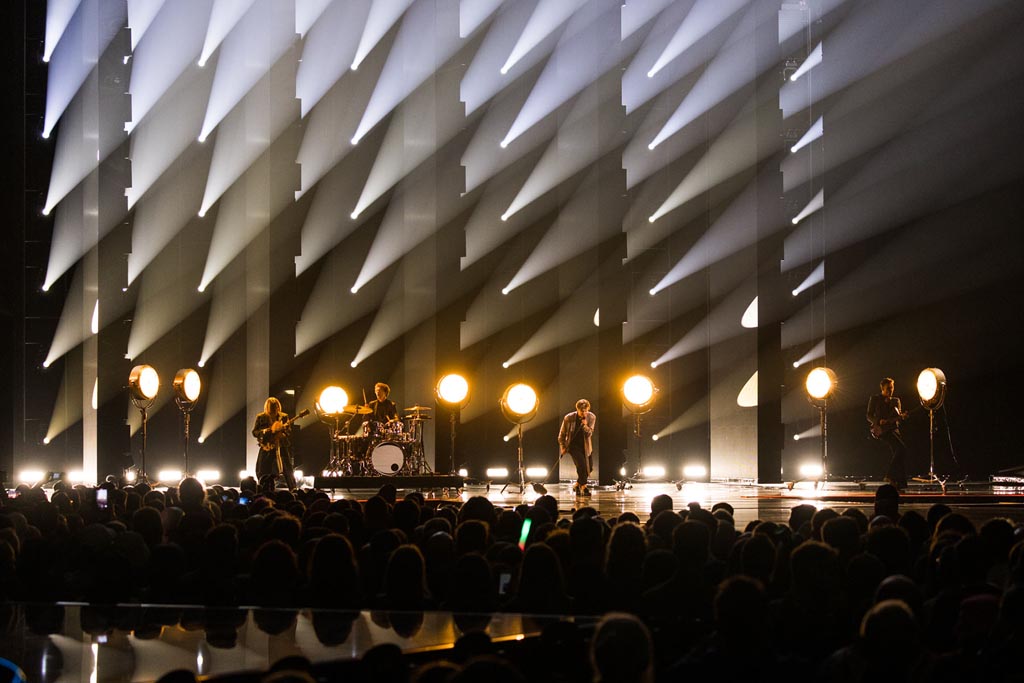
A Sheer Mountain of Gear
With such tight time schedules and high-profile exposure, Routledge needed equipment that was fast, accurate, versatile and reliable. He chose Ayrton’s new Zonda 9 FX, Karif LT, MagicBlade R and the laser-sourced Cobra as some of the key components of his lighting inventory.
90 Zonda 9 FXs were used to create 10 ‘Svoboda 3000’ pods, Routledge’s modernised recreation of the classic Svoboda batten, which he says were a “massively important feature” in the show.
The pods were mounted on independent automated hoists and tessellated within the three concentric rings of oval lightboxes above the centre stage to form one big curve, and could each be lowered and raised at will.
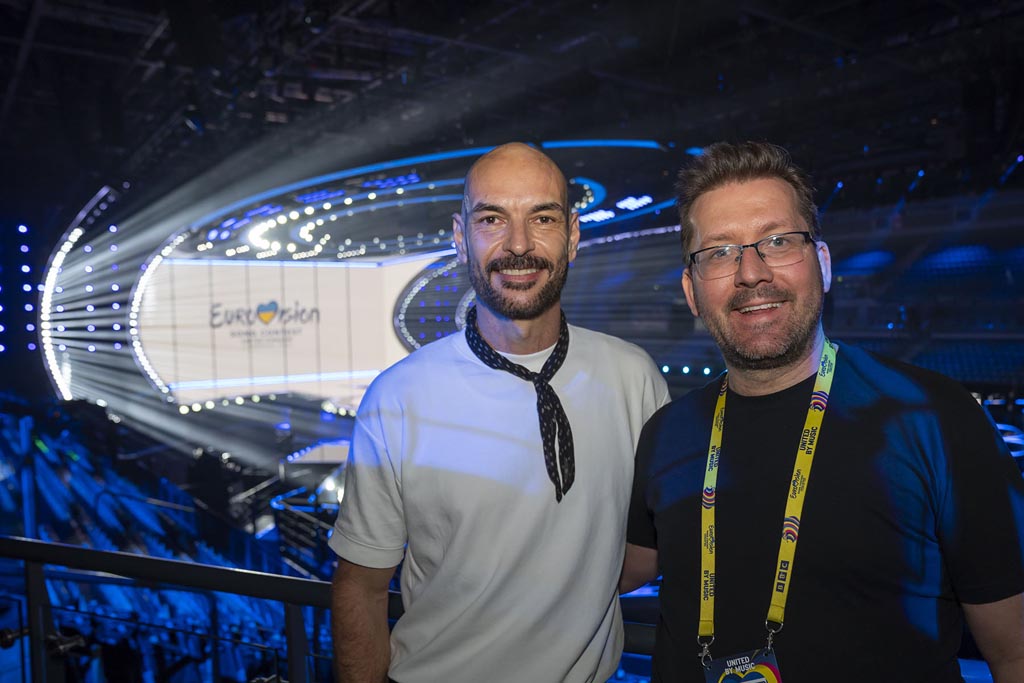
“I’ve always loved those Svoboda lights, plus it was a kind of nod to my late father who first gave me a book on Josef Svoboda when I was young,” said Routledge. “We wanted to create a Svoboda pod that was epic and could fly in and out individually.”
Zonda 9 FX’s large face was ideal for providing the eye-candy and dressing looks that Routledge was after, as well as performing as a punchy wash light. “Zonda 9 FX has great power, but we chose it mainly for the clever matrix effect (LiquidEffects) on the front,” he said. “These gave really cool looks to fill the shots when they were dropped in low and created something pretty without having to blow the shot with loads of powerful light; they looked great without even having to use their punch. They proved very popular with the delegations and fulfilled the brief of what I was trying to achieve with the pods perfectly.”

96 MagicBlade R were rigged in the central chandelier feature that filled the space between the oval light boxes in the centre of the arena. These were used for “fun stuff and sky eye-candy filling the centre spot above the oval stage,” Tim added.
50 laser-sourced Cobra, which can narrow down to the tightest of beams at 0.6°, were rigged down the sides of the arena to provide big beam looks for all the audience ‘down-the- room’ shots and dressing shots for camera reverses. “The Cobras were used really well on several numbers,” Routledge said, “especially France’s prop, which was edged in a mirrorball fascia, and during the Semi-Final 1 half-time show when the performers opened up their costumes to reveal a mirrorball-textured heart jacket. We pointed the Cobras at those with phenomenal effect.”
“At another point, Spain wanted their artiste to scoop up a beam of light in her hand: one Cobra was aimed at a specific spot for a closeup on her hand bathed in high-intensity light that looked like she was literally holding light. The punch and tight beams the Cobras gave us shooting from 80m; well, they were brilliant in every sense of the word!”
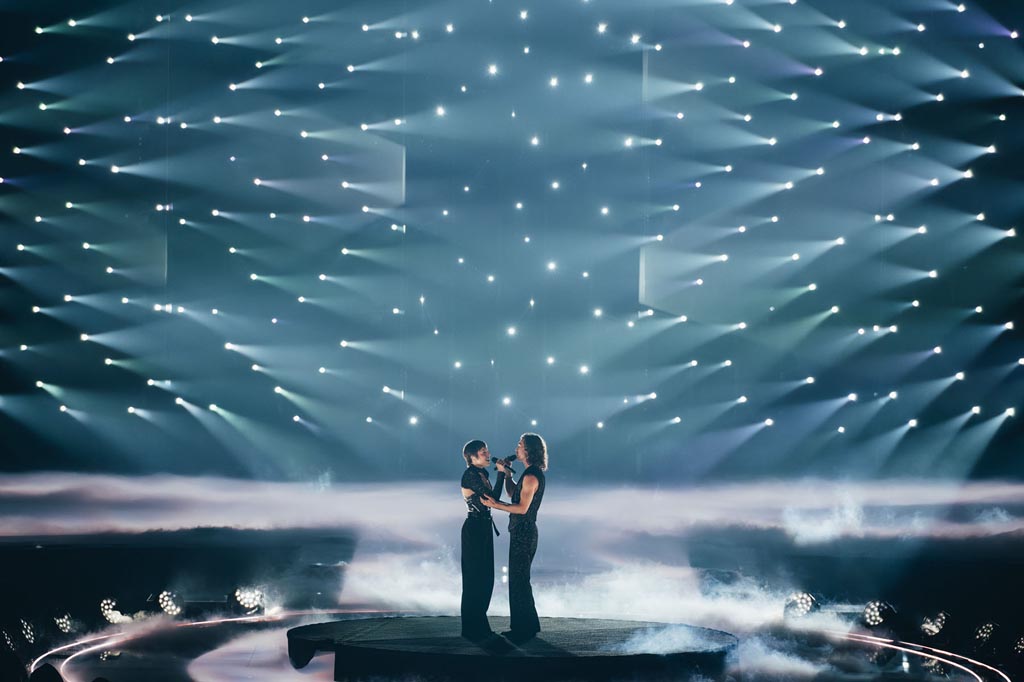
In addition, 30 Karif LT were rigged around the arena on goal posts to provide back beams for the audience shots and to add background texture to the oval stage’s left and right wings. “To avoid compromising audience sightlines, we were quite restricted for space and height, so I needed a compact beam light that would work well in those tight spaces. Finding the right LED fixture that was small and fast was the challenge, and Karif LT fitted the bill really well.”
Tim also utilised over 600 Robe moving lights for his design, which comprised approximately 2500 luminaires plus two kilometres of LED tape, clocking up 1,500 individual light sources when counting the individual pixel cells of the various fixtures, all supplied via lighting equipment contractor, Neg Earth Lights.
The lighting rig included a 15-way Robe RoboSpot remote follow system running with 15 out of the 66 Robe Fortes in the building, which were positioned all around the arena, offering the flexibility of picking up artists from any angle, eliminating shadows and ensuring faces looked perfect.
The Forte parameters could all be controlled via the front-of-house grandMA3 consoles, leaving the operators free to concentrate on following the artists.
Other Robe elements included 152 LEDBeam 150s, 84 Painters, 123 Spiiders, 190 TetraXs, 12 Robe BMFL Blades and 12 Robe PATT2013s (a fixture that Tim invented, and that he used on this occasion to light Latvia’s performance).
A back wall of TetraXs worked brilliantly as stun-and-amaze effects for several artists. They were on the reverse side of seven LED columns making up the back wall of screen which rotated 360 degrees revealing the TetraXs, and made their presence felt during the performances of Israel, France, Finland and others.
An upstage wall of Painters was revealed when the screens were rotated at 90 degrees.

Cues Around the Block
Tim elucidated that around 79,000 lighting cues were programmed into the consoles over the course of the three live broadcast shows. For the Grand Final, in particular, which featured everything from thrash metal to hip- hop, there were 50-second set changeovers, and each delegation had its own creative directors and demands. Needless to say, and given the sheer intensity of creating that many individual performances in a short space of time, several of them very complex, challenges abounded.
Tim was also the first to credit the “massive” teamwork that made it all happen, together with the fusion of skills, experience, personalities, and camaraderie of all involved. Tim was “thrilled” with the outcome, even admitting that designing a Eurovision final event was one of his professional bucket-list items!
“It is the most joyous show I have worked on,” he said, “with a team who just wanted to be there and give it their all, and of which Ukraine could be very proud!”
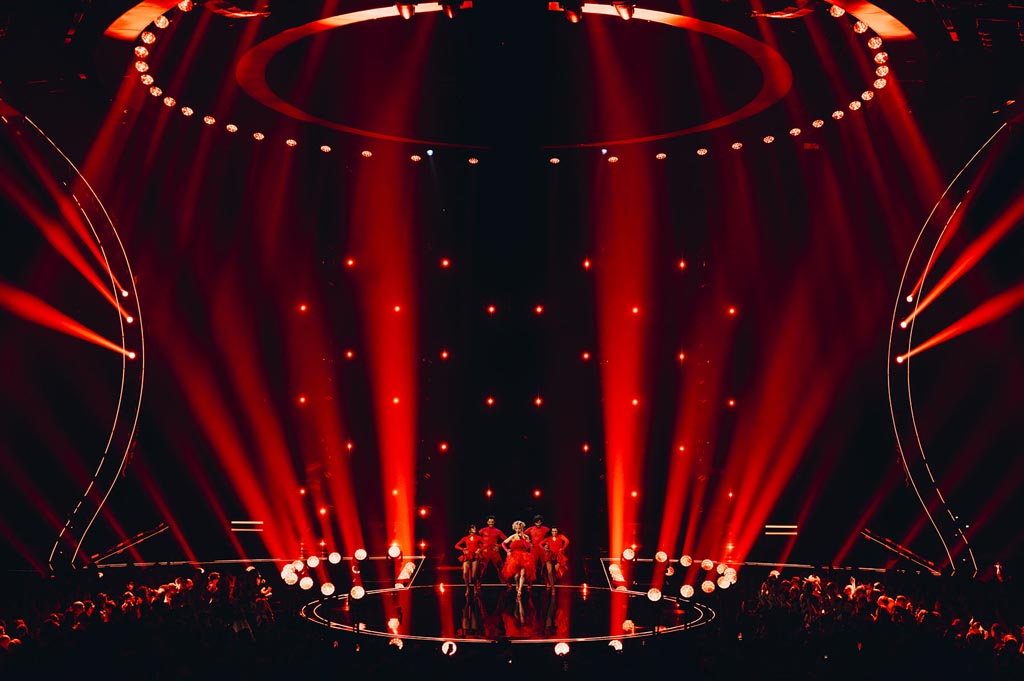
“I want to heap praise on my programmers: Tom Young, Alex Mildenhall and Mark Nicholson, who programmed over 79,000 beat-perfect precise lighting cues, and my Associate LD, James Scott, for helping this dream come to fruition,” he concluded.
Neg Earth Lights was the official lighting supplier for Eurovision Song Contest 2023, with great technical support by Ambersphere.
Tim’s FOH team included Ukrainian LD and programmer Zhenya Kostyra, a regular at Kyiv-based rental company Alight, who worked as the overnight associate LD when on site, with James Scott as the overall lighting design associate.
Lead programmer was Tom Young, and the other two main programmers were Marc Nicholson and Alex Mildenhall.
Follow spots were called by Louisa Smurthwaite, and Morgan Evans worked with Tim and Tom during the pre-viz period which included four weeks at Neg Earth’s studio ahead of the get-in in Liverpool, when the process continued onsite as each delegation’s lighting looks were finessed.
Seven students, on stage and lighting design and technical courses, at two locally based academies: the Liverpool Institute of Performing Arts (LIPA) and Cheshire College, had the opportunity of working on Tim’s crew for the duration of the event. Five were RoboSpot operators and the other two were lighting technicians, all recruited via Robe UK’s NRG (Next Robe Generation) programme.
Additionally, Tim’s team co-ordinated with four vision engineers in the truck, and at the centre of ensuring all things lighting ran as smoothly as the surface of the best polished Eurovision glitterball, was gaffer Keith Duncan.
The annual Eurovision Song Contest is one of the biggest entertainment broadcast events of the year.
It was organised by the European Broadcasting Union (EBU) and host broadcaster the BBC (British Broadcasting Corporation) on behalf of UA:PBA, Ukraine’s public broadcaster.
The live shows were presented by British singer Alesha Dixon, British actress Hannah Waddington and Ukrainian singer Julia Sanina, who were joined for the final by Irish TV personality, Graham Norton.
The 2023 winner was Sweden with ‘Tattoo’, performed by Loreen, who became only the second performer in the history of Eurovision to win twice, following her success in 2012 with another banger, ‘Euphoria’.
Coming in a nail-biting second was Finland’s flamboyant Käärijä with ‘Cha Cha Cha’ which stormed home with the biggest public vote.
Feature Photo Credit: Corinne Cumming
Subscribe
Published monthly since 1991, our famous AV industry magazine is free for download or pay for print. Subscribers also receive CX News, our free weekly email with the latest industry news and jobs.




